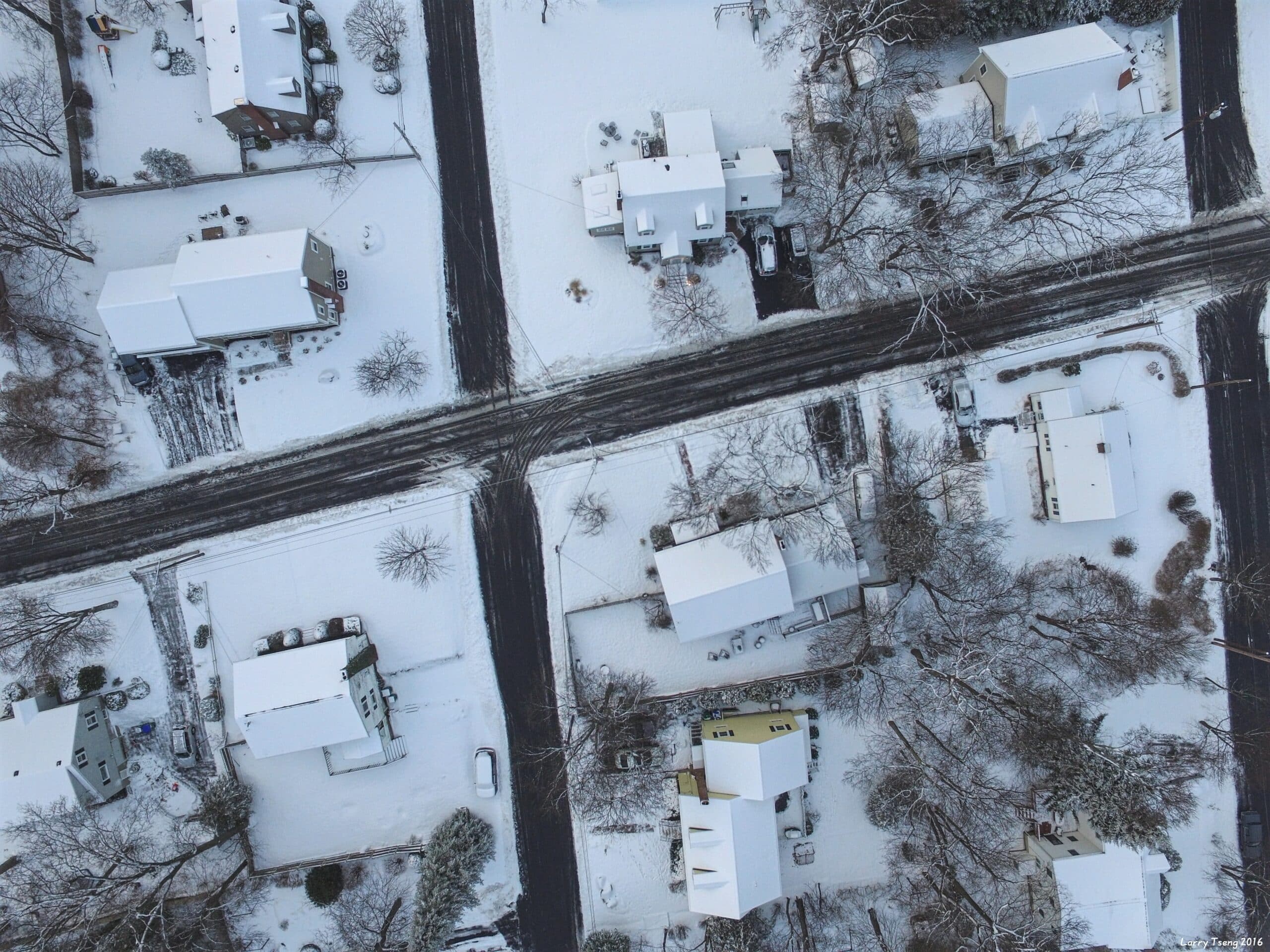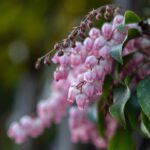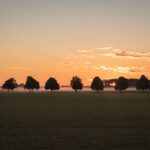Having a small yard doesn’t mean you can’t have beautiful trees! There are many types of trees that are perfect for small yards, offering shade and beauty without taking up too much space. From evergreens to flowering trees, the options are seemingly endless. To help narrow down the choices, we’ve identified nine of the best trees for small yards so you can create the garden of your dreams.
In this article, we’ll discuss why these nine varieties stand out from the crowd and how to choose one that will work in your yard. We’ll also provide tips on how to plant and care for your tree so it will thrive in your outdoor space. If you’re ready to add some greenery but don’t know where to start, then this article is for you!
From creating a cozy atmosphere to adding privacy and texture, a tree can really transform a small yard into something special. Read on to learn about nine of the best trees for small yards and get inspired by all their possibilities!
Magnolia Trees
When it comes to finding the perfect tree for a small yard, one of the best choices is magnolia trees. These stunning trees are known for their eye-catching blooms that range from snow-white to deep pink and purple. In addition, magnolia trees have glossy green foliage that adds a lush look to any landscape. To illustrate the beauty of these trees, consider this story: A family recently added a magnolia tree to their small yard and were delighted with the results. Not only did it instantly add curb appeal, but its fragrant flowers quickly drew in butterflies and hummingbirds from all around.
The magnolia tree is also incredibly low maintenance and can be planted in almost any soil type or climate zone. And because they grow slowly, you don’t have to worry about pruning as often as with faster growing trees. Plus, when mature, they typically reach heights of between 20 and 40 feet – just right for a small yard!
So if you’re looking for a beautiful tree that doesn’t take up too much space or require daily upkeep, then consider the majestic magnolia tree. From its showy blooms to its easy care routine, this is an ideal choice for any sized yard! With its unique beauty, it’s sure to become an instant favorite in your landscape design.
Next up: serviceberry trees – another great option for small yards!
Serviceberry Trees
Moving on from magnolia trees, serviceberry trees are another great option for small yards. These trees are renowned for their eye-catching white blossoms that come in the springtime. Serviceberry trees also provide a stunning array of colors in the fall, as their foliage turns to bright oranges, yellows and reds. Plus, depending on the type of tree you choose, you can expect them to grow anywhere from 12 to 25 feet tall – making them an ideal height for tight spaces!
Serviceberry trees are also low maintenance when it comes to care and upkeep. They require only minimal pruning and fertilization, so they’re easy to keep healthy without much effort. Additionally, they’re drought-tolerant and can tolerate a range of soil types – including clay or sandy soils. This makes them an excellent choice for anyone who doesn’t have a lot of time but still wants a striking tree in their yard.
Overall, serviceberry trees make an excellent choice for small yards due to their breathtaking blooms, colorful foliage, moderate height and low maintenance needs. With these features combined, they offer beauty and convenience that few other trees can match up to. Transitioning into the next section now: crabapple trees are another great option that should not be overlooked…
Crabapple Trees
Ah, yes, if you’re looking for a tree to stand out in your small yard like a sore thumb, the crabapple tree is definitely it! It’s so ungainly and disorganized that even the most careless of gardeners can appreciate its beauty. Whether you choose a flowering or an ornamental variety, this tree is sure to turn heads.
But don’t be fooled – this tree isn’t just about looks. With its hardy nature and disease-resistant properties, it’s an easy choice for anyone who wants to enjoy their backyard greenery without too much fuss. Plus, it’s one of the few trees that can actually thrive in smaller yards with limited space and sun exposure.
TIP: When planting a crabapple tree in a small yard, make sure you choose one with low-hanging branches that won’t grow too tall or wide. That way, you’ll still have plenty of room to move around without worry of overcrowding!
Dogwood Trees
Have you ever thought about beautifying your small yard with a tree? Dogwood trees are an excellent option for smaller spaces! Here’s why:
• They have lovely white or pink flowers in the springtime • They boast eye-catching seasonal foliage • Dogwoods come in a variety of sizes, so they’re perfect for any size yard • They produce bright red fruit that’s attractive to birds and other wildlife • Some varieties even have colorful twigs during the winter months.
Dogwoods are also great because they require minimal maintenance. Most varieties only reach heights between 15 and 30 feet, so pruning is rarely necessary. Plus, these trees prefer partial to full shade and moist soil, making them easy to care for.
Since dogwood trees are relatively low-maintenance and provide a plethora of beauty benefits, they make ideal additions to any small yard. With their vibrant foliage, fragrant blooms, and striking bark texture, these trees truly add character to outdoor spaces. Now, let’s look at another type of tree that’s great for small yards—redbud trees.
Redbud Trees
Redbud trees are like a ray of sunshine in a small yard, adding vibrant colors and creating an inviting atmosphere. Their bright pink and purple blooms arrive in spring to signal the start of a new season, offering a beautiful contrast to the surrounding greens. Redbud trees are perfect for small yards because they remain relatively short, typically growing between 15-30 feet tall.
The canopy of redbud trees can be shaped and pruned as desired, allowing them to take on different forms depending on their location. While some species can reach up to 40 feet tall at maturity, most will stay within the 15-20 foot range when grown in small yards. Additionally, redbuds have shallow root systems that help preserve soil moisture and prevent erosion, making them ideal for areas with limited space or drier climates.
Redbud trees are also fairly low-maintenance, requiring minimal pruning and occasional fertilizing for optimal growth. In addition to providing beauty and color, these trees also offer essential benefits such as reducing air pollution by absorbing carbon dioxide from the atmosphere. All in all, redbud trees are an excellent choice for those looking to add a touch of springtime cheer to their small yard without taking up too much space.
Japanese maples provide a stunning display of foliage with delicate leaves ranging from deep purple to fiery orange.
Japanese Maples
Just like the Japanese people, the japanese maple tree is known for its beauty. Its delicate leaves and stunning colors have inspired countless works of art. Like a great piece of art, this tree can bring a unique touch to any small yard.
These trees come in many varieties and sizes that make them ideal for small yards. They have a low canopy that doesn’t require pruning or trimming, and they grow slowly, so they won’t quickly outgrow their space. Here are some details about these majestic trees:
• They are generally easy to care for and can tolerate partial shade • The leaves turn a vibrant red or yellow color in the fall • Some varieties can reach heights of up to 20 feet when fully grown
Japanese maples are an excellent choice for adding character and beauty to a small yard. Whether it’s the wide variety of colors or their delicate beauty, these trees will give your yard a touch of elegance that will last for years to come. With careful planning and careful upkeep, you can create a stunning landscape with these beautiful trees as the centerpiece.
Paperbark Maples
Japanese maples are known for their vibrant colours and delicate foliage, so paperbark maples offer a striking contrast. With their lush green canopies, these trees add texture to any outdoor space. But, there’s more than just meets the eye when it comes to paperbark maples.
Not only do they look beautiful during the summer months, but they also have an intriguing bark that adds a visual element to your garden. The bark is incredibly unique and exfoliates in strips of mottled orange and cinnamon-brown throughout the year. This provides an added layer of beauty and interest in your backyard all year round.
Paperbark maple trees are perfect for small yards as they don’t take up too much space and can be easily pruned to maintain their size. They also require little maintenance, making them ideal for those who want a low-maintenance tree with stunning visuals. So if you’re looking for an eye-catching tree that won’t overpower your small yard, then consider adding a paperbark maple! With its combination of captivating visuals and easy upkeep, it’s no wonder why this is one of the most popular trees for small yards today.
While paperbark maples offer great visual interest and low maintenance requirements, another option worth considering is flowering cherry trees.
Flowering Cherry Trees
The 8th tree that is ideal for small yards is the flowering cherry tree. This vibrant and fragrant tree can add a splash of color to any space, even one with limited area. With its beautiful blossoms, which come in shades of pink or white, this tree adds a graceful yet sweet look to any yard. It also has an incredibly long blooming period, so it will provide a stunning backdrop throughout much of the year.
Flowering cherry trees are also relatively easy to care for. The only requirement is that they should be planted in full sun and receive regular waterings. Plus, they don’t need too much pruning or additional fertilizer to thrive. This makes them a great choice for those who don’t want to spend a lot of time tending their yard but still want to enjoy the beauty of nature.
Overall, flowering cherry trees are an excellent option for small yards as they offer both beauty and ease of care. They provide a wonderful display of color during their bloom and require very little maintenance along the way. As such, they make an ideal addition to any outdoor space looking for something special. With this in mind, it’s time to explore what hawthorn trees have to offer next!
Hawthorn Trees
Hawthorn trees symbolize the power of endurance. Despite their small size, they are incredibly resilient, capable of withstanding a variety of both conditions and climates. Much like life itself, these trees hold a deep sense of determination and strength that is often overlooked due to its modest appearance.
These small trees make great additions to any small yard or garden. Not only do they provide shade and beauty, but they also offer up sweet-smelling white flowers during the spring months and attractive red berries in the fall. Plus, they can live up to 200 years!
The hawthorn tree is a reminder that even in life’s most challenging moments, we must never give up hope. As long as we remain determined and focused on our goals, then nothing can stop us from achieving them – no matter how small or insignificant we may seem on the outside. With this in mind, let us move on to explore the wonders of dwarf fruit trees.
Dwarf Fruit Trees
When it comes to gardening, there’s something special about growing your own fruit. And if you have limited yard space, dwarf fruit trees are the perfect way to bring that joy home. Let’s explore why these small wonders are worth adding to your garden:
• They provide a bounty of delicious and nutritious fruits in a fraction of the space that regular sized trees take up. • Dwarf varieties require less pruning and maintenance than their full-sized counterparts. • Many types of dwarf fruit trees can be grown in containers, allowing you to move them around as needed. • Some varieties even bear fruit more quickly than standard sized trees. • Dwarf fruit trees come in many different shapes, sizes and colors, so you can find one to fit any style of garden or landscape.
Not only do these trees give you all the benefits of regular-sized fruit trees, but they also add an element of fun and whimsy to your outdoor space. If you’re looking for a unique way to add some sweetness to your yard without taking up too much room, dwarf fruit trees might be just what you need!
Columnar Evergreens
If you’re looking for a timeless, elegant addition to your small yard, look no further than columnar evergreens. From the grassy ground up to the tips of their branches, they offer an ethereal beauty that casts a calming presence over any space. Their densely packed needles and tall, narrow silhouette will add an extra layer of privacy to your outdoor area while taking up very little room.
Plus, they come in numerous varieties and colors. You can find ones in shades of green or blue-green, with some even showing off hues of yellow or red when the seasons change! With all these options, you’re sure to find one that fits your landscaping needs perfectly.
If maintenance is a concern for you, don’t worry – columnar evergreens require very little upkeep after planting. Just make sure to water them regularly and keep away from any strong winds that could damage their branches. TIP: If you plant several columnar evergreens together in a row formation, this will create an even more dramatic effect in your yard!
Spruce Trees
Whereas columnar evergreens provide a vertical element in small yards, spruce trees can offer the same while adding a bit more versatility. These coniferous trees are easy to care for and come in varieties that range from pyramidal to ground-hugging. They also act as natural windbreaks, making them a popular choice for homeowners who want to reduce energy costs. Spruces have dark green needles that are soft to the touch, providing texture and color to any landscape design. Plus, they’re incredibly hardy, surviving even harsher climates than other types of trees.
An added bonus of planting spruces is the availability of new cultivars with blue-tinted foliage that offers an extra layer of visual interest to a small yard. However, it’s important to keep in mind that these trees grow quickly, so they should be properly pruned and trimmed on a regular basis. With proper maintenance, spruces can be an ideal addition to any backyard oasis.
The next step is exploring options for oak trees; these majestic plants make an elegant statement in any setting while providing reliable shade and privacy.
Oak Trees
Oak trees are the perfect choice for small yards because of their dense foliage and ability to provide shade. Their mature height is typically between 40 and 80 feet, but they can be pruned at a young age to create a smaller version that is more suitable for small yards. Oak trees are also low-maintenance and drought tolerant once established, so they won’t require a lot of extra watering or care.
The oak tree’s leaves provide plenty of color throughout the year, with shades of red, yellow, and orange in the fall. The dense canopy will also provide privacy from neighbors during the warmer months when people are out enjoying their yards. Additionally, oaks have deep roots that help prevent soil erosion during heavy rains and strong winds.
These trees make an excellent addition to any landscape because they’re easy to maintain while adding visual interest with their colorful foliage and providing much needed shade in hot summer months. With proper care, oak trees can last for decades without needing too much effort from the homeowner.
Arborvitae Trees
At the end of the day, arborvitae trees are a great option for small yards. These evergreen conifers are low-maintenance, providing a great way to liven up any outdoor space. Plus, they come in different shapes and sizes that make them easy to fit into even the smallest of backyards.
Arborvitae trees can reach heights of up to 40 feet tall, depending on the variety chosen. What’s more, they’re also quite hardy—able to survive in all sorts of climates. They don’t need pruning or special care either; just occasional watering is enough for their health. This makes them an ideal pick for busy homeowners who don’t have much time to devote to yard maintenance.
When it comes to aesthetics, arborvitae trees provide an attractive backdrop for flower beds and other garden features. They come in shades of green as well as yellow and blue hues that add interesting visual elements to any outdoor space. All this considered, it’s no wonder why so many people choose arborvitae trees for their yards! Smoothly transitioning into the next section about Japanese garden juniper, these evergreens are a great addition no matter what size your yard may be!
Japanese Garden Juniper
Japanese Garden Juniper is a beautiful tree option for those with limited space. It can grow to an average height of 4-6 feet, and is perfect for creating a lush and vibrant landscape in even the smallest of yards. Plus, it offers a unique look that can add interest and texture to any outdoor area.
Not only is Japanese Garden Juniper a great choice for small yards, but it also has one very beneficial attribute: it’s incredibly low maintenance. This means that once you’ve planted it, you don’t have to worry about pruning or trimming; all you have to do is sit back and enjoy its beauty. Moreover, this tree variety is cold-hardy and drought-resistant, making it ideal for most climates.
Japanese Garden Juniper provides so much in terms of visual appeal and ease of care; it’s no wonder why it’s become such a popular choice among homeowners looking to spruce up their yards without taking up too much time or effort. With its impressive range of sizes and shapes, this tree is sure to bring life and character to any yard—no matter how big or small!
Frequently Asked Questions
How Much Space Is Needed For Each Of The Trees?
It’s a daunting task to find the right tree for your small yard, but with some careful consideration, you can make it happen. It’s like threading a needle – you need to know how much space each tree needs in order to make sure it fits! To help you out, here are three of the best trees for small yards:
- Japanese Maple – this graceful and colorful tree requires only 6-10 feet of space;
- Dogwood – the beautiful flowering dogwood needs 5-15 feet of space;
- Dwarf Evergreen – dwarf evergreen trees require 8-12 feet of space.
So, while there are many great options for small yards, you need to consider how much room each tree needs before making your decision. This is where research comes in: read up on all the details about each variety so that you can choose one that works for your yard size and landscape design goals. With careful planning and consideration, you’ll be able to find the perfect tree for your small yard!
How Much Maintenance Is Required For The Trees?
When choosing trees for small yards, one should think about the amount of maintenance required for each tree. Trees require different levels of care depending on the type, and it is important to consider this when deciding which to use.
Different species will require different levels of pruning and fertilization, as well as pest control or protection from extreme weather conditions. For example, evergreen trees may need more frequent pruning than deciduous varieties, while fruit trees may need more regular fertilizing and spraying for pests.
The amount of time spent caring for trees can vary significantly, depending on the type and size of the tree. Many smaller trees are low-maintenance, meaning they require less effort to keep healthy and attractive. But larger trees often require a greater commitment in terms of pruning and maintenance in order to remain healthy and look their best. It’s important to research each species before settling on the right choice for your yard.
Are The Trees Suitable For All Climates?
When it comes to landscaping, selecting the right tree for your small yard can be a tricky proposition. Some trees may require more maintenance than others and some may be better suited for certain climates. So, are the trees suitable for all climates?
The good news is that many of the trees recommended for small yards are versatile enough to adapt to different climates. However, there are still factors to consider when selecting a tree. For example, some species may do better in warmer climates while others thrive in cooler regions. Additionally, you should also take into account how much sun exposure the area receives so that you can choose the best variety of tree for your specific climate.
Ultimately, the type of tree you select will depend on how much effort you’re willing to put into caring for it and what kind of environment it’ll be growing in. Make sure you do your research ahead of time and determine which type of tree will suit your particular needs best before you make a purchase. Then, with proper care and maintenance, you’ll have a beautiful addition to your yard that will bring years of enjoyment!
Are There Any Safety Concerns With These Trees?
When choosing the best trees for small yards, one of the important things to consider is safety. According to an article by the Arbor Day Foundation, trees are responsible for nearly 50% of all power outages in the U.S. That’s an interesting statistic to keep in mind when deciding what type of tree you want in your yard.
It’s also important to make sure that any tree you choose is appropriate for your climate and soil type. In addition, if you’re considering planting a tree near power lines or other utilities, make sure it won’t grow too tall and interfere with their operation. Trees can also cause damage to sidewalks and foundations if they are planted too close to a structure, so be sure to check your local ordinances before planting anything.
TIP: If you’re looking for a way to ensure safety when planting trees in your yard, talk with a certified arborist or landscape professional who can help you select the right trees and provide advice on proper planting techniques. They can also help with pruning and maintenance over time, making sure your trees remain safe and healthy!
How Long Does It Take For The Trees To Reach Maturity?
When it comes to choosing trees for small yards, many people want to know how long it takes for them to reach maturity. It’s important to consider this factor, as mature trees can provide more shade and visual interest. Knowing the expected timetable also helps with planning out landscaping projects.
The timeframe for a tree reaching maturity varies based on species and environmental factors such as sunlight and soil quality. Evergreen trees, like cedars and junipers, tend to grow faster than deciduous varieties, like maples and oaks, but all of them will eventually reach their maximum size if given the right conditions.
In general, most trees take anywhere from five to ten years before they reach maturity. However, there are some exceptions – for instance, a flowering cherry tree may take up to fifteen years or longer before it is considered fully grown. Therefore, when selecting a tree for your yard, it’s best to research the estimated timeline of each species first so you know what you’re in for down the road!
Conclusion
Trees can bring beauty and life to a small space, but it’s important to choose the right tree for your yard. The nine trees listed in this article can provide the perfect balance of beauty and practicality for smaller yards.
The good news is that these trees require very little maintenance, are suitable for a variety of climates, and can be easily managed without safety concerns. Although each tree has its own growth rate, they are all relatively fast-growing and can reach maturity within a few years.
So if you’re looking to add some shade or privacy to your small yard, these nine trees may be just what you need! With careful consideration of their needs and careful planting, you will have a beautiful addition to your outdoor space in no time.





























